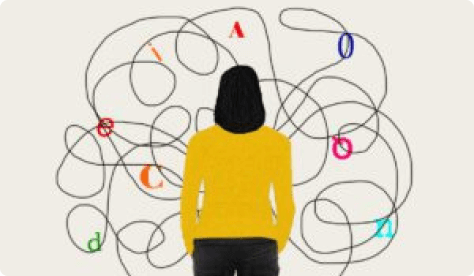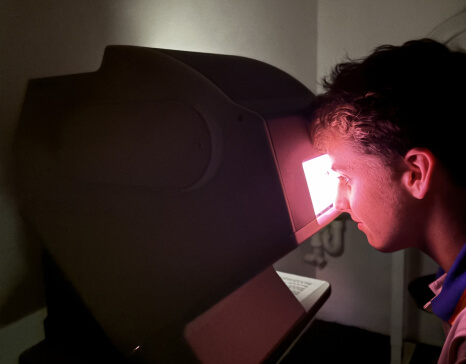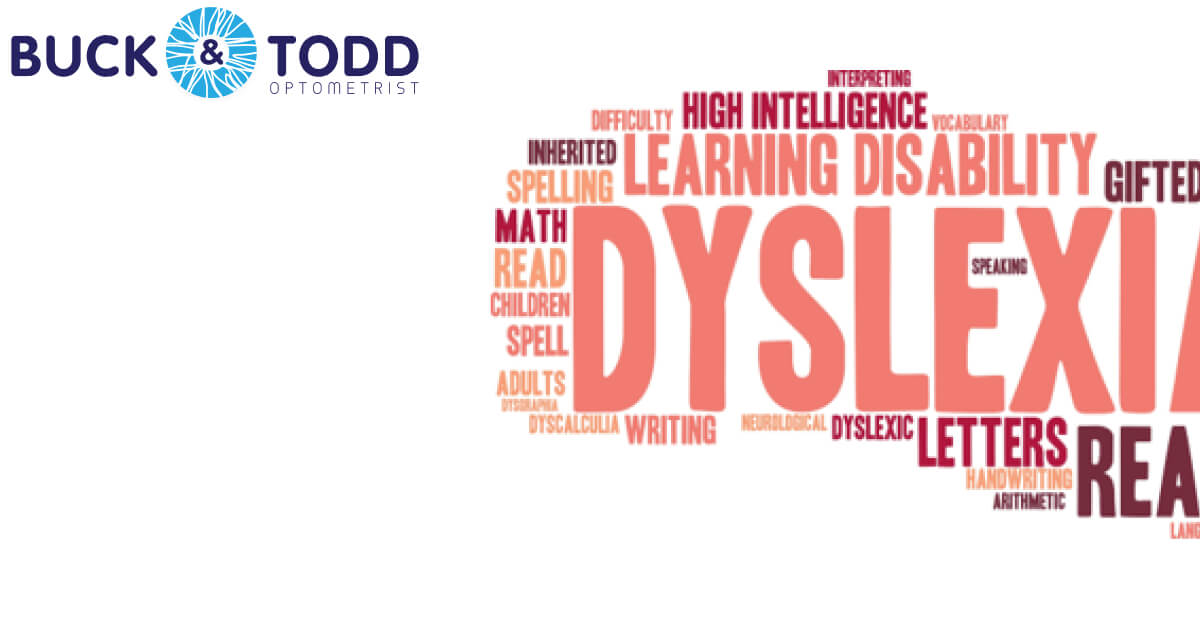Dyslexia? Lets define it.
Dyslexia is a neurodevelopmental disorder that affects reading and spelling abilities. It is characterised by difficulties with phonological processing, which involves recognising and manipulating the sounds of language, as well as with decoding words, identifying and remembering sight words, and comprehending written text. Dyslexia is a lifelong condition due to differences in brain structure and function that affect language processing. It can impact academic performance and daily activities and can also affect social and emotional well-being.

Inaccurate vision can lead to a misdiagnosis of dyslexia or make dyslexia symptoms worse. Visual problems such as poor eye coordination, convergence insufficiency, or focusing problems can cause reading difficulties that may be mistaken for dyslexia. In some cases, individuals with visual problems may experience blurry or double vision, which can make it difficult to read and understand written text. They may also experience eye strain, headaches, and fatigue while reading.
These symptoms can cause frustration and anxiety, leading to a dislike of reading and a reluctance to engage in academic tasks. Therefore, it is important to assess and treat any visual problems before diagnosing dyslexia or implementing interventions for dyslexia. Comprehensive vision evaluations, including visual acuity, eye coordination, and tracking skills, should be conducted as part of the assessment for any individual with reading difficulties. Addressing any visual problems can improve reading ability and reduce frustration and anxiety, allowing individuals to reach their full potential.
“Only once all vision, auditory and immature neurological developmental issues have been resolved should a diagnosis of dyslexia be considered.”
Interventions for dyslexia may include specialised instruction in phonics, decoding, and reading comprehension, as well as accommodations and assistive technology to support reading and writing. With appropriate support, individuals with dyslexia can achieve academic and personal success.
How can we help your child with Dyslexia?
- Body motor control / balance
- Mathematical skills
- Reversals, letters and words
- Phonetic decoding and encoding
- Whole word awareness

We discover any underlying vision and sensory processing issues which have contributed to learning difficulties and we set in motion a plan to rectify all of these conditions, both through Vision Therapy and by providing information to other appropriate professionals including Occupational Therapists, Chiropractors, Physiotherapists, Audiometrist, Speech therapists, Teachers, Tutors and most importantly Primary Caregivers (Parents).
We do not diagnose dyslexia. We grade the components of dyslexia which are deficient, and we seek to develop an age related mature sensory processing system which is able to integrate more visual, auditory and proprioceptive information more quickly with more comprehension, without fatigue and without frustration.
Removing the sensory processing impediments to learning to read, usually results in a child who is able to take on the tuition offered by schools and teachers and enhances your child’s ability to read to learn and overcome a premature dyslexia diagnosis.
Step 1. The Vision Input System: Binocular Vision Assessment
Are the eyes healthy?
- Any pathology needs to be discovered and resolved before we consider assistive measures.
Will glasses improve clarity and focus?
- If your visual acuity is poor or your focussing is stressed glasses may be required to make things easier to see.
Binocular Vision
- Our eyes point forward for a reason. We are not cows and we are not chameleons. We have evolved as apex predators and to achieve well we need to have good depth perception which comes from good binocular vision. At the same time technology has shifted the burden that was once carried by our backs squarely onto our eyes. To achieve scholastically we must have well-functioning binocular vision at near.
Binocular vision needs to be evaluated in detail to determine:
- How well the eyes align at distance
- How well the eyes align at near
- How much reserve of accommodation is present
- How much reserve of divergence is present
-
How much reserve of convergence is present
- How well is tracking developed
- How well do saccadic movements work
- Can we pay attention to the periphery
- Do we have vertical alignment reserves
- Does binocular vision stay stable as we move through space
- Is stereopsis present at distance and near
- Is there double vision
- Is some of the visual field being suppressed
Step 2. Dyslexia Component Evaluation.
We can ascertain how well your child recognises age related levels of reading words, and how they can decode phonetically. We reintroduce unknown words to assess their phonetic encoding skills and we use tests for reversals, eye control, and spatial awareness skills.
Step 3. Auditory Processing and Retained Reflexes.
Helping a child with Dyslexia requires a community. To determine which parts of the multidisciplinary fields that are available are most suitable we use modified testing to determine your child’s auditory processing, laterality, balance and neutral flow as well as their neurological development. We can refer those who require assistance from Speech Therapists, Occupational Therapists, Chiropractors or Physiotherapists as required, and direct those we can help further into Vision Therapy.
Step 4. Intuitive Colorimetry
We are the only centre north of Brisbane with an Intuitive Colorimeter and access to the Wilkins Rate of Reading test used to assess the effect of colour overlays. Many people with reading difficulties benefit from coloured filters to reduce pattern glare. Using the intuitive colorimeter we are able to determine the precise colour (hue and saturation) required to maximise the comfort that can be achieved through use of colour.
For more on colorimetry click HERE.

If you are concerned that your child is struggling with Dyslexia, help click HERE for more information and help.
